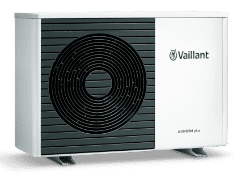When it comes to home improvements those who are renting may want to make little changes to the property that they are living in. These may be changes that will make the space feel a little more like it is their own home and not just a space that they have borrowed. However, it is always important to remember that the house still belongs to the landlord and there are certain rules that are in place when it comes to the types of home improvements that you can make. Plus, there are also some types of repairs and improvements that are the responsibility of the landlord. In this article, we aim to give a clear understanding of both and also highlight the role of the landlord when it comes to the energy efficiency of the property.
What repairs is my landlord responsible for?
When it comes to rented property, as with any other property, there will undoubtedly be some things that over time will need some repair or home improvements made to. These may be things that are subjected to normal wear and tear and as a tenant it is important to understand which of these items may fall under the responsibility of your landlord.
A landlord will always be responsible for repairs to:
- The property exterior and structure
- Sanitary fittings including basins, sinks, baths and also pipes and drains
- Heating and hot water supplies
- Gas appliances, pipes, ventilation and flues
- Electrical wiring
- Any damage that occurs whilst they are repairing any of the above
If you encounter an issue with any of these then you have a responsibility as the tenant to inform your landlord, so that they can arrange for the appropriate repairs to be made.
If you are renting in a block of flats, then your landlord is also responsible for repairing any common areas such as staircases.
Your landlord is also responsible for the energy efficiency of the property. As such, there should be an EPC rating of E or above in place for the property. As a tenant you should have been given a copy of the certificate, but if you don’t have it, you can check the rating via the government website. If the property is not very energy efficient then your landlord is responsible for improving this, whether this is by installing the appropriate types of insulation, double glazing the windows or even improving the boiler.
If you think your rented accommodation requires improvements to its current state and could qualify for ECO4 funding, from the government-backed scheme, use our eligibility checker online to confirm your house or apartment’s qualification status.
What home improvements can a tenant make?
Before you consider making any home improvements to your rental property it is a good idea to check your rental agreement and see exactly what it says. If you are renting privately then it is a good idea to run any improvements that you want to make past your landlord first. For some improvements, for example painting, your landlord will usually agree with the stipulation that you restore the property to its original appearance before moving out. This is a standard stipulation that most landlords will make.
You will usually be responsible for the cost of any home improvements. However, if the improvement you are looking at could be mutually beneficial to the landlord, then they may agree to pay at least some of the costs.
The rules are slightly different for those who are in social housing and have a secure tenancy (these are tenancies started before 15 January 1989 – where the tenant can live in the property for the rest of their life provided they don’t break the conditions for doing so). They have a right to carry out improvements to the property, including installing a new kitchen or bathroom.











